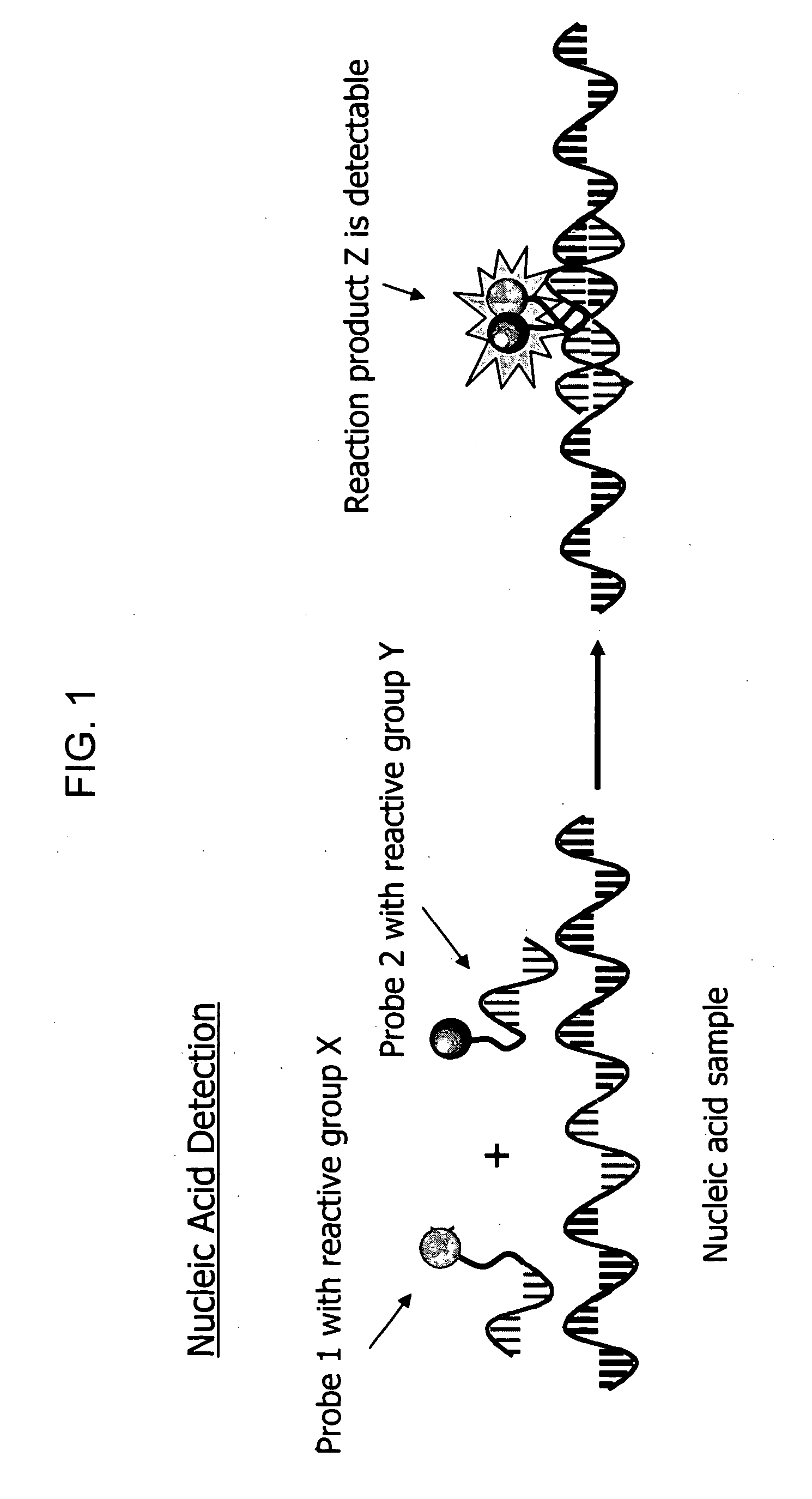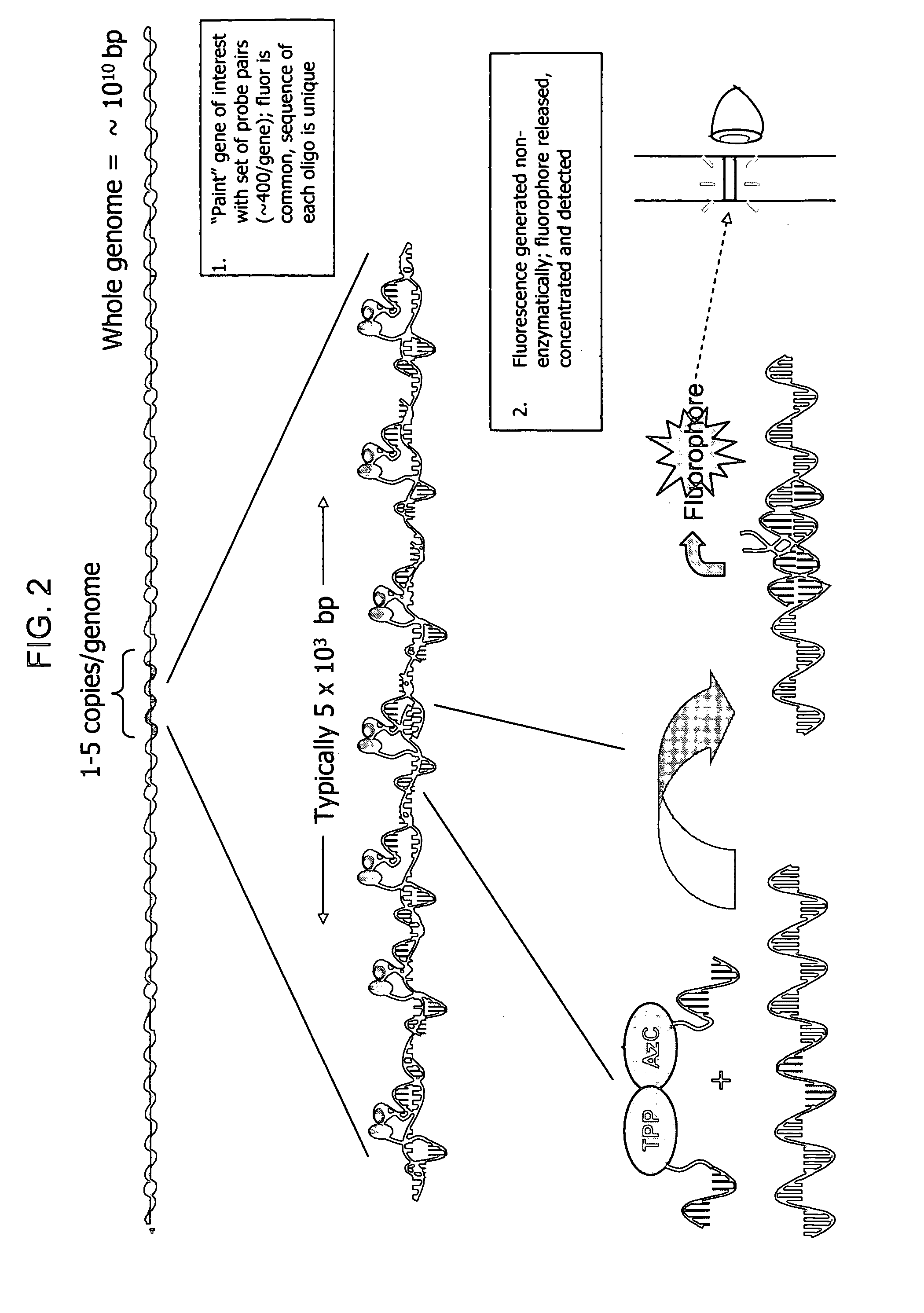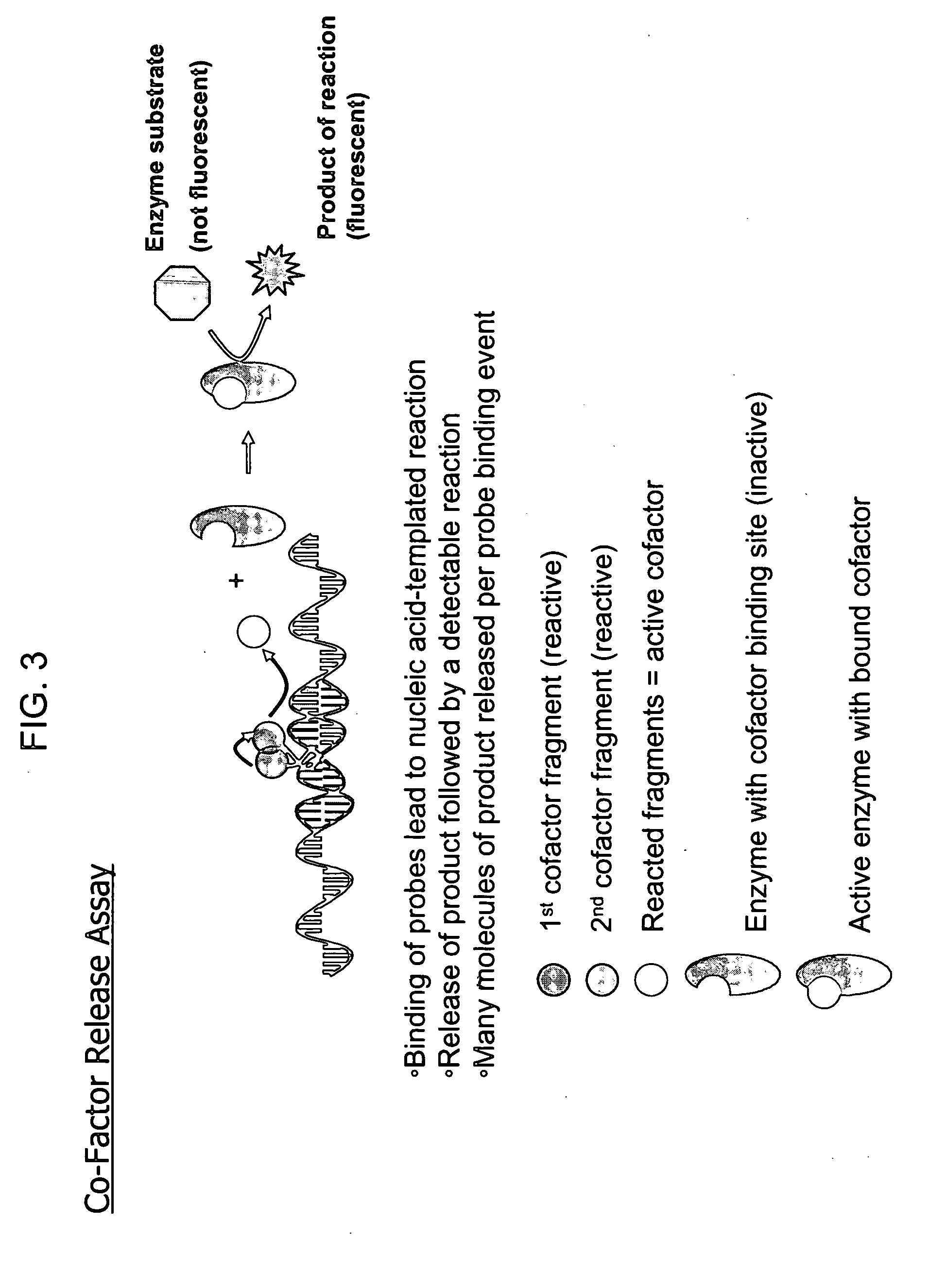Biodetection by nucleic acid-templated chemistry
a nucleic acid and chemistry technology, applied in the field of probes, can solve the problems of pcr suffering some limitations, additional time and cost (reagents and possibly equipment), and assays that require expensive and power-hungry equipmen
- Summary
- Abstract
- Description
- Claims
- Application Information
AI Technical Summary
Benefits of technology
Problems solved by technology
Method used
Image
Examples
example 1
Creation of Fluorescence by Hybridization Induced Azidocoumarin Reduction
[0166] Five oligonucleotides were prepared using standard phosphoramidite chemistry (Glen Research, Sterling Va., USA). Oligonucleotides bearing 5′-amino groups (Oligo2 and Oligo6) were prepared using 5′-Amino-Modifier 5 and Oligonucleotides bearing 3′-amino groups (Oligo4 and Oligo5) were prepared using 3′-Amino-Modifier C7 CPG (Glen Research, Sterling Va., USA)
Oligo15′-GTGGTAGTTGGAGCTGGTGGCGTAGGCAA(SEQ. ID. NO. 19)GA-3′Oligo25′-H2N-AGCTCCAACTACCAC-3′(SEQ. ID. NO. 20)Oligo45′-GTGGTAGTTGGAGCT-NH2-3′(SEQ. ID. NO. 21)Oligo55′-TCTTGCCTACGCCAC-NH2-3′(SEQ. ID. NO. 22)Oligo65′-H2N-AGATCCCACTAGCAC-3′(SEQ. ID. NO. 23)
[0167] Oligo1, Oligo4 and Oligo5 were removed from the synthesis support and purified by reversed-phase HPLC. The amino groups of Oligo2 and Oligo6 were converted while resin-bound to their triphenyl phosphine derivatives and these were purified and isolated (Sakurai et al., J. Amer. Chem. Soc. (2005) V...
example 2
Gene Painting
[0172] Gene Painting is a method of sequence detection based upon developing signal at multiple sites within a target. The multiple sites typically lie within a gene sequence that one wishes to show the presence, absence or the quantity of. Within a relatively long sequence, for example a 5,000 base sequence, one can target smaller sequences, typically 40-50 bases, which are unique to that sequence. These are targeted by pairs of oligonucleotide probes, each typically 10-20 bases long. If the probes averaged about 12 bases in length, about 400 pairs of probes can “paint” a 5,000 base long sequence. Each of these probe pairs is a reactive pair (via nucleic acid template chemistry, as described in FIG. 1) and produces a fluorophore from prefluorophore precursors. The total fluorescence generated is the sum of the generation of all 400 fluorophores. To detect, for example, a 5,000 base-long unique gene sequence in a sample of corn genomic DNA simply requires preparation o...
example 3
Oligonucleotide Hybridization, Concentration and Melting Temperatures
[0175] A model system was prepared which included two twenty-mer oligonucleotides with a ten-base complementary region and ten-base single stranded spacer arms, further linked to a six carbon spacer arm. These oligos were synthesized both with and without a 5′-biotin (with a 6-carbon spacer arm). As shown below, the complementary region is underlined. A third oligo was identical to the (−) strand oligo but with 4 base mismatches (italicized) to the (+) strand.
Oligo 26(+) strand5′ CTTCGGCCCAGATATCGT(SEQ. ID. NO. 24)Oligo 27(−) strand3′ GTCTATAGCATCGACATC(SEQ. ID. NO. 25)Oligo 28(−) mis-3′ TACTATAGTGTCGACATC(SEQ. ID. NO. 26)match
[0176] Melting curves of the 10-base pair oligonucleotide pair (oligo 26+oligo 27) were examined by measuring fluorescence of SYBR dye binding to double stranded DNA in a Bio-Rad iCycler (Lipsky, et al., Clinical Chemistry 47[4], 635-44. 2001.) The binding curves are presented as the first...
PUM
| Property | Measurement | Unit |
|---|---|---|
| Tm | aaaaa | aaaaa |
| Tm | aaaaa | aaaaa |
| pH | aaaaa | aaaaa |
Abstract
Description
Claims
Application Information
 Login to View More
Login to View More - R&D
- Intellectual Property
- Life Sciences
- Materials
- Tech Scout
- Unparalleled Data Quality
- Higher Quality Content
- 60% Fewer Hallucinations
Browse by: Latest US Patents, China's latest patents, Technical Efficacy Thesaurus, Application Domain, Technology Topic, Popular Technical Reports.
© 2025 PatSnap. All rights reserved.Legal|Privacy policy|Modern Slavery Act Transparency Statement|Sitemap|About US| Contact US: help@patsnap.com



